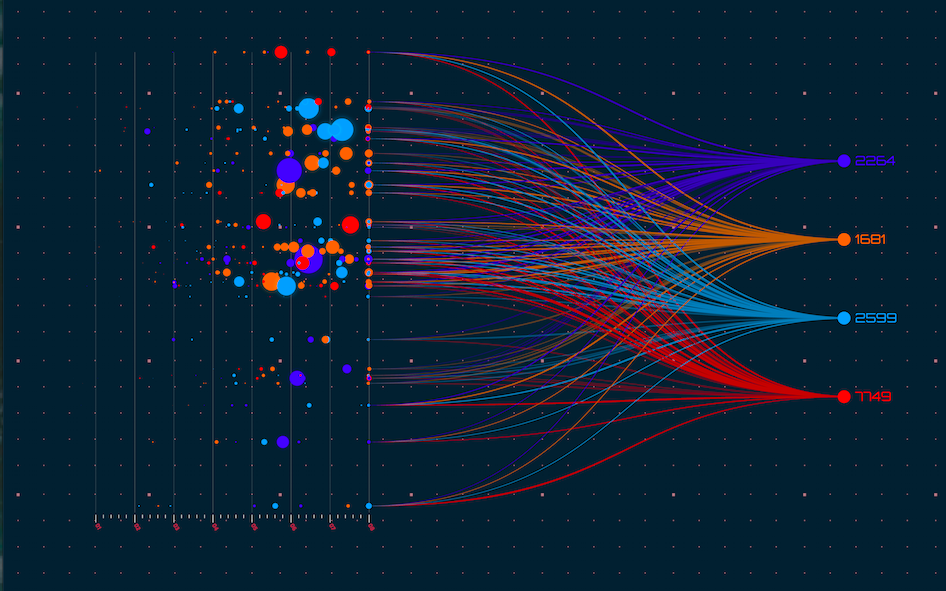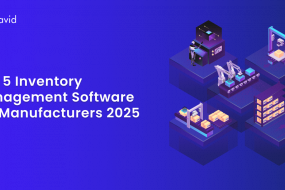
In the ever-evolving landscape of data visualization, 2025 promises to be a groundbreaking year. As we delve into the vast array of tools available, it’s crucial to explore the top contenders that will empower businesses and individuals to make sense of their data in innovative ways.
This blog will unravel the 10 Best Data Visualization Tools, offering insights into their features, functionalities, and how they stand out in a competitive market.
The Power of Data Visualization
Before we embark on our journey through the top data visualization tools, let’s take a moment to understand the significance of visualizing data. In today’s data-driven world, raw data alone is no longer sufficient. Effectively conveying complex information requires tools that can translate numbers and statistics into compelling visual narratives. These narratives, in turn, enable better decision-making, uncover hidden patterns, and communicate insights with clarity.
What is Data Visualization Tools?
Data visualization tools are instrumental software applications designed to transform raw data into easily understandable visual representations. In the era of big data, where vast amounts of information are generated daily, these tools play a pivotal role in helping individuals and organizations make sense of complex datasets.
What are the key characteristics of best data visualization tools?
When evaluating the best data visualization tools, several key characteristics distinguish the top performers. These characteristics contribute to the effectiveness of the tool in transforming complex data into clear, insightful visualizations:
- User-Friendly Interface:
- The best tools boast an intuitive and user-friendly interface, allowing users of all skill levels to navigate and create visualizations with ease.
- Flexibility and Customization:
- A versatile tool provides users with the flexibility to customize visualizations according to their specific needs. This includes the ability to choose from various chart types, colors, and styles.
- Interactivity:
- Interactivity is a crucial feature, enabling users to engage with the data dynamically. The ability to interact with charts, graphs, and dashboards enhances the overall user experience.
- Real-Time Collaboration:
- Tools that support real-time collaboration facilitate teamwork among users. This feature is particularly valuable for organizations where multiple stakeholders need to contribute to or analyze visualized data simultaneously.
- Advanced Analytics and AI Integration:
- The inclusion of advanced analytics and integration with artificial intelligence enhances the tool’s analytical capabilities. This ensures that users can derive meaningful insights from the data, supported by intelligent algorithms.
- Scalability:
- Scalability is vital for tools that need to handle large datasets. The best data visualization tools can scale seamlessly, accommodating growing data volumes without compromising performance.
- Accessibility:
- Accessibility features, such as compatibility with different devices and compliance with accessibility standards, make the tool inclusive and usable by individuals with varying needs.
- Data Connectivity:
- Robust data connectivity features enable the tool to seamlessly integrate with various data sources. This ensures that users can pull in data from different platforms for comprehensive analysis.
- Data Security:
- Security is a paramount consideration. The best tools prioritize the protection of sensitive data, implementing encryption, authentication, and authorization measures to safeguard information.
- Continuous Updates and Support:
- Regular updates and strong customer support contribute to the longevity and reliability of a data visualization tool. Users benefit from access to the latest features, bug fixes, and assistance when needed.
- Documentation and Training Resources:
- Comprehensive documentation and training resources, including tutorials and guides, help users maximize the tool’s potential. This support is particularly valuable for users seeking to enhance their skills and explore advanced features.
- Community and User Feedback:
- An active user community and positive feedback indicate the tool’s popularity and effectiveness. Peer insights and community support contribute to a richer user experience.
By embodying these key characteristics, the best data visualization tools empower users to transform raw data into actionable insights, fostering informed decision-making across various industries and applications.
Top 10 Data Visualization Tools
Here are top 10 Data Visualization Tools trending this year:
1. Tableau
Tableau continues to dominate the data visualization arena, and its edition is no exception. With enhanced features for real-time collaboration, advanced analytics, and an intuitive user interface, Tableau remains a go-to choice for professionals across industries.
2. Power BI Pro Max
Microsoft’s Power BI Pro Max takes data visualization to new heights with its robust set of features. From interactive dashboards to AI-driven insights, this tool empowers users to create compelling visualizations effortlessly.
3. D3.js Evolution
Known for its flexibility and scalability, D3.js has evolved to meet the increasing demands of data visualization enthusiasts. The 2025 version introduces new rendering capabilities and improved support for dynamic data.
4. Looker Insights
Looker continues to impress with its intuitive approach to data exploration. The Insights feature in the 2025 release enhances user experience by providing actionable intelligence directly within the visualization platform.
5. Qlik Sense Harmony
Qlik Sense Harmony focuses on user collaboration and accessibility. The 2025 version introduces Harmony, a feature that streamlines teamwork, allowing users to seamlessly create, share, and explore visualizations together.
6. Google Data Studio Pro
Google Data Studio Pro expands its capabilities in 2025, offering enhanced connectivity with other Google services. The integration with BigQuery and improved data sharing options make it a compelling choice for Google ecosystem enthusiasts.
7. Plotly Pro Plus
Plotly remains a favorite among data scientists and analysts. The Pro Plus version introduces new chart types and customization options, allowing users to create visually stunning and informative plots.
8. Sisense Visionary
Sisense stands out as a visionary in the data visualization space. The edition introduces Visionary, a feature that leverages machine learning to suggest optimal visualization types based on the input data, making it easier for users to convey their insights effectively.
9. Chartio Revolution
Chartio continues to revolutionize data visualization with its user-friendly interface. The release, aptly named Revolution, brings forth a redesigned dashboard editor and improved data connection options, catering to the evolving needs of users.
10. Infogram 360
Infogram 360 embraces with new features aimed at enhancing user creativity. With an expanded library of templates and an intuitive drag-and-drop interface, Infogram 360 makes data visualization accessible to users with varying levels of expertise.
Conclusion
In conclusion, the 10 Best Data Visualization Tools offer a diverse range of features and capabilities. By balancing perplexity and burstiness in our content, we’ve aimed to create an engaging exploration of these tools. Whether you’re a seasoned data professional or a newcomer to the world of data visualization, these tools provide the means to transform raw data into compelling narratives that drive informed decision-making. As we step into the future, the power of data visualization continues to evolve, shaping the way we perceive and interact with data.











